Gallery
- Firebriage HQ (1911), d'Herbouvillekaai, Antwerp [3]
- Loodswezen (pilotage), Port of Antwerp [4]
- Royal Atheneum, Franklin Rooseveltplaats, Antwerp [5]
Ferdinand Truyman(1857-1939) was a Belgian architect well known for his art nouveau building designs. [1] He was active particularly in Antwerp. [2]

Boechout is a municipality of Belgium located in the Flemish province of Antwerp.

Weert is a village in the municipality of Bornem, Antwerp Province, Belgium.

Melsele is a town in the Belgian province of East Flanders, between the city of Beveren and the nearby town of Zwijndrecht. Tram route 3 which starts just outside the town connects it to Zwijndrecht and Antwerp. The town's road links include the E17 and the E34.
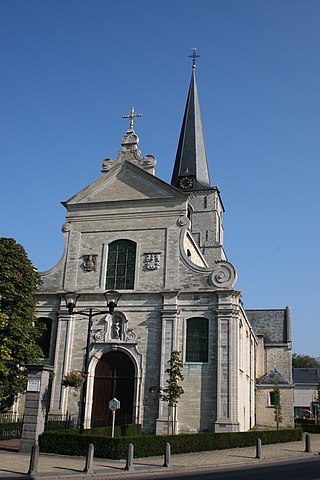
Broechem is a part of the municipality of Ranst in Antwerp Province, Flemish Region, Belgium. The village is located on the highest point of the region.
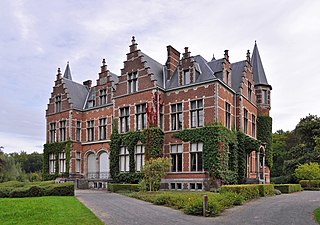
Oelegem is a village and deelgemeente (sub-municipality) of the municipality of Ranst in the province of Antwerp, Belgium. The village is located about 14 kilometres (8.7 mi) east of the city of Antwerp.

Heindonk is a Belgian village in the municipality of Willebroek in the province of Antwerp in Belgium. It is situated northwest of the city of Mechelen.

Morkhoven is a village in the Belgian province of Antwerp belonging to the municipality of the city of Herentals.

Poppel is a village in the municipality of Ravels, in the province of Antwerp, Belgium. As of 2021, it was home to 3,489 people. Poppel was a municipality until 1977. Poppel borders the Dutch province of North Brabant.

Haasdonk is a village and deelgemeente (sub-municipality) of Beveren in East Flanders, Belgium. Haasdonk was an independent municipality until 1 January 1977, when it merged with Beveren as part of the fusion of municipalities in Belgium. It is located about 12 kilometres (7.5 mi) west of Antwerp.

Liezele is a village and deelgemeente (sub-municipality) of the municipality of Puurs-Sint-Amands in the province of Antwerp, Belgium. The village is located about 20 kilometres (12 mi) south-south-west of the city of Antwerp. On the night of 4 to 5 September 1914, the entire village was destroyed by the Belgian Army to deny the Germany Army cover.

The Flanders Heritage Agency is a cultural heritage agency sponsored by the Flemish Government. The organisation is split into four subdivisions; the former VIOE, which inventories Beschermd erfgoed in the Flemish Region; the agency "Ruimte en Erfgoed" which executes policy on heritage management and protection; the Ministry department of Town and County Planning, Housing Policy and Immovable Heritage, or Ruimtelijke Ordening, Woonbeleid en Onroerend Erfgoed (RWO), which supports the Minister of Culture on policy decisions; and Inspectie RWO, which is the inspection arm of the RWO.

Meer is a village in the Belgian municipality of Hoogstraten in the province of Antwerp. As of 2021, it has 3,542 inhabitants.

Minderhout is a village in the Belgian municipality of Hoogstraten in the province of Antwerp close to the border with the Netherlands. As of 2021, it has about 4,420 inhabitants.
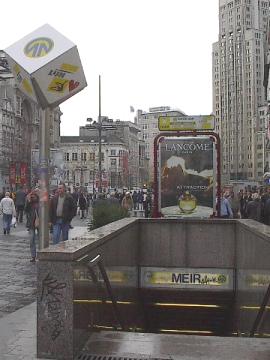
Meir is a station in the Antwerp premetro which opened on 23 March 1975. The station is located directly underneath the street Meir, after which it is named.
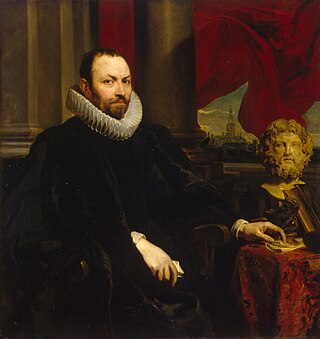
The Snijders&Rockox House is a museum in Antwerp, Belgium. It is located in two neighbouring townhouses formerly owned by the artist Frans Snyders (1579–1657) and the mayor Nicolaas Rockox (1560–1640). It is owned by KBC Bank and showcases a collection of 16th century art.
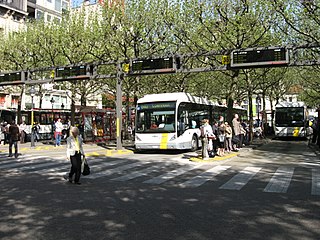
The Franklin Rooseveltplaats is a large square in the city of Antwerp, Belgium, placed at the crossing of the Leien and Turnhoutsebaan, and within walking distance of the Koningin Astridplein and Antwerp-Central station. The square functions primarily as the main bus station in Antwerp, which with its 28 platforms handles a large part of all bus transport in the city, as well as several tram routes.

Kallo is a village and deelgemeente (sub-municipality) of Beveren in East Flanders, Belgium. Kallo was an independent municipality until 1 January 1977, when it merged with Beveren as part of the fusion of municipalities in Belgium. Most of the deelgemeente consists of harbours and industrial zones.

Saint Ivo's College was a college at the Old University of Leuven that provided accommodation and facilities for poor students in the Faculty of Law. The founder was Robertus de Lacu, originally from Ghent, who had been professor of canon law since 1463. The college was dedicated to Ivo of Kermartin, the patron saint of lawyers, and was used by the law faculty for faculty meetings and ceremonies. The original library was destroyed by marauding Spanish soldiers in 1578, during the Dutch Revolt.

The Art Nouveau movement of architecture and design appeared in Antwerp, Belgium, between roughly 1898 and the start of the First World War in 1914. It was principally practiced by the architects Joseph Bascourt, Jacques De Weerdt, Jules Hofman, Émile Van Averbeke, Émile Thielens, Frans Smet-Verhas as well as August Cols and Alfried Defever. Its principal characteristics in Antwerp buildings include whiplash lines and irregular curves in moldings, ironwork, and incised decoration; gentle arches; colorful ceramic tiles, mosaics, and stained glass; gilded asymmetrical ornament; sgraffito; and keyhole windows and screens.

The King Albert I Memorial, also named the King Albert I Monument is a memorial at the Belgian coastal city of Nieuwpoort. It is located right outside the old town, on the right bank of the Yser river at the lock complex Ganzepoot. The monument was erected in 1938 after a design of Julien de Ridder and honours both King Albert I of Belgium and the Belgian troops at the time of the First World War.